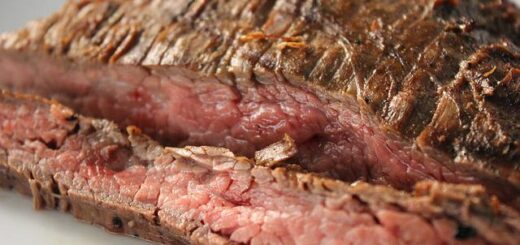Why does meat change color?

Many people wonder why meat changes color. Well, it doesn’t always mean that it has gone bad, a lot depends on the situation in which that meat is found. For example, cooked red meat becomes brown, if we take it out of the fridge it becomes dark, when vacuum-packed it darkens…
Have you ever wondered why meat changes color ? Well, it doesn’t always mean that the meat has gone bad . There are some cases in which the variation in color of the meat is only due to particular conditions, but in which it is still edible. Obviously, if the meat has changed color and smells rotten, you should not eat it for any reason. Particular attention, then, must be paid to minced meat which tends to last very little and goes bad quickly.
Why does meat change color? It depends on the situation
What we generically call “meat” is actually muscle tissue mixed with adipose tissue and connective tissue. However, the lion’s share is made up of muscle tissue which is composed of proteins. Among them is myoglobin , responsible for the color of meat.
Myoglobin usually accumulates oxygen (oxymyoglobin), which is essential for the correct functioning of the muscle. The more oxygen is accumulated, the redder the meat will be and vice versa. As the meat loses oxygen or is oxygenated less, the iron atom contained in myoglobin and which normally binds to oxygen begins to oxidize (metamyoglobin). Then the flesh changes color and becomes first brown and then greyish.
This, for example, is what happens to meat preserved under vacuum . Or even blackened slices of meat where they rest on other slices.
This means that this blackening does not always indicate deterioration of the meat . In the latter case, in fact, the bacterial load present in the meat begins to increase, causing the classic smell of “bad meat” .
So dark meat is not always spoiled , but could simply be in the process of oxidation.
Another case in which the meat changes color is during maturation . This process, aimed at making the muscle fibers softer and giving greater flavor to the meat, usually takes place in special refrigerators which allow this maturation without the meat going bad in the meantime.
Cooking also changes the color of the meat : depending on the cooking method and the intensity of the heat , the color of cooked meat varies from brown to greyish. Obviously after cooking the meat can remain more or less red: in rare meat, obviously, the cooking, being less, will give a redder color to the meat . Well-cooked meat, on the other hand, will have a more or less intense brown color depending on how cooked we want it.
Meat color and preservatives
Then there are preservatives that allow the meat not to change color . In reality, it has been banned here in Italy since 1996, but once upon a time meat was treated with carbon monoxide to stimulate myoglobin and ensure that the meat remained red for longer. In other countries its use is still permitted, although in itself it is not harmful for human consumption.
For example, in cured meats and sausages , such as mortadella and cooked ham, nitrates are added which release nitric oxide which binds to iron and gives the meat a pink colour. This way the meat can be preserved for longer.
If the meat turns dark, can it be eaten?
As we said before, it depends on why the meat has become dark . If it is vacuum-packed or maturing meat, if there are no anomalous odors, greenish colors or insect larvae present, then yes.
However, the advice is to consume the meat purchased within 2-3 days maximum , even if you have kept it in the refrigerator. This is because our refrigerators do not have the power of those in butcher’s shops and the meat will degrade much sooner. This also applies to minced meat which tends to deteriorate very quickly.
How to understand if the meat is spoiled?
You can understand that the meat is spoiled and absolutely cannot be eaten (even if cooked) if it has these characteristics:
- the flesh becomes very dark and opaque
- it gives off a bad rotten smell (similar to that of rotten eggs) due to the increase in bacterial load
- the meat fibers are much less elastic, they are soft and not very compact
- the meat appears rotten or with the presence of fly larvae
It goes without saying that consuming meat in these conditions causes serious and potentially lethal food poisoning.











